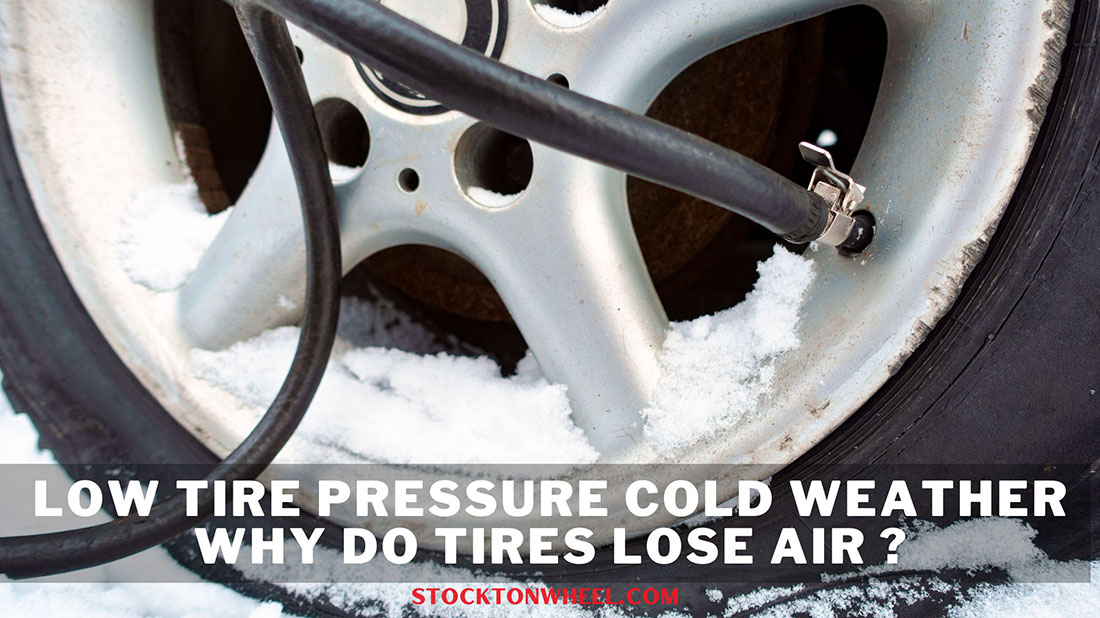Does Cold Weather Cause Low Tire Pressure

Does the chill in the air deflate your tires? The answer, in short, is a resounding yes. But it's not magic; it's basic physics. Let's dive into why cold weather causes low tire pressure and what you can do about it, explained in a way that any car enthusiast, owner, or hobby mechanic can easily grasp.
The Physics Behind the Pressure Drop
At its core, tire pressure is simply a measure of the force that air molecules exert on the inside walls of your tire. These molecules are constantly moving, bouncing off each other and the tire. Temperature is directly related to the speed of these molecules. The hotter the air, the faster the molecules move, and the more forcefully they collide with the tire, resulting in higher pressure.
Conversely, when the temperature drops, the air molecules slow down. They don't have as much kinetic energy, so they collide with the tire walls with less force. This decrease in force translates directly to lower tire pressure. It's like a group of kids playing dodgeball: if they're throwing the balls hard (high temperature), they'll exert more pressure on the target; if they're throwing them softly (low temperature), the pressure is less.
Think of it like this: imagine you fill the tire of your BMW 3 Series on a warm summer day, say 80°F (27°C), to the recommended 32 PSI (pounds per square inch). As the temperature drops overnight to 40°F (4°C), the air inside the tire cools. The air molecules lose energy, impacting the tire walls with less force. You'll likely see a drop of several PSI, potentially triggering the tire pressure monitoring system (TPMS) on your BMW.
The Ideal Gas Law: A Technical (But Understandable) Explanation
For those who enjoy a bit more technical detail, the relationship between pressure, volume, and temperature is governed by the Ideal Gas Law, which can be simplified for our purposes: P ∝ T (Pressure is proportional to Temperature). This means that as the temperature (T) decreases, the pressure (P) also decreases, assuming the volume (V) remains relatively constant, which is a fair assumption for a tire. It's important to note that this is a simplified view, as a tire isn't a perfect "ideal gas" system, but it gets the point across.
Why "Roughly 1 PSI Per 10 Degrees Fahrenheit" Matters
A common rule of thumb is that tire pressure drops by approximately 1 PSI for every 10 degrees Fahrenheit (5.6 degrees Celsius) drop in temperature. While not perfectly precise, this is a useful guideline for anticipating pressure changes. So, if your Ford F-150's tires are properly inflated to 35 PSI at 70°F (21°C), and the temperature drops to 30°F (-1°C), you can expect a pressure drop of around 4 PSI. That could put you below the recommended pressure and impact handling and fuel economy.
TPMS and Cold Weather: A Common Source of Frustration
Modern cars, like a Toyota Camry or a Honda Civic, are equipped with tire pressure monitoring systems (TPMS). These systems use sensors to detect when a tire's pressure falls below a certain threshold, usually around 25% below the recommended pressure, triggering a warning light on the dashboard. While TPMS is a valuable safety feature, it can become a source of frustration during cold weather.
Imagine you fill your tires to the correct pressure on a moderately cold day. Then, overnight, the temperature plummets. The tire pressure drops, triggering the TPMS warning. You might think there's a leak or a more serious problem, but often it's simply the effect of the cold weather. It's always a good idea to manually check your tire pressure with a gauge, even if the TPMS hasn't triggered, especially during significant temperature swings.
Beyond the Pressure: Other Cold Weather Effects on Tires
While low tire pressure is the most immediate concern, cold weather can also affect tires in other ways:
- Reduced Flexibility: Tire rubber becomes less flexible in cold temperatures, which can slightly reduce grip and potentially increase the risk of damage from potholes or other road hazards.
- Increased Rolling Resistance: Cold tires have a higher rolling resistance, which can slightly decrease fuel economy.
These effects are generally less significant than the impact of low tire pressure, but they are worth considering, particularly in extremely cold climates.
Practical Takeaways: What You Should Do
So, what does all this mean for you and your car?
Regularly Check Your Tire Pressure: This is especially important during periods of cold weather. Use a reliable tire pressure gauge to check your tires when they are cold (before driving).
Adjust for Temperature: If you inflate your tires in a warm garage, be sure to check them again after they've been exposed to the colder outdoor temperatures. Don't just rely on the TPMS.
Inflate to the Recommended Pressure: Find the recommended tire pressure on the sticker inside your driver's side doorjamb or in your owner's manual. Don't just inflate to the maximum pressure listed on the tire sidewall; that's the maximum the tire can handle, not necessarily the ideal pressure for your vehicle.
Consider Nitrogen: While air is about 78% nitrogen, some shops offer pure nitrogen fills. Nitrogen molecules are larger than oxygen molecules, so they leak out of tires slower, potentially maintaining pressure more consistently over time, although the difference is often minimal.
Don't Overinflate: Overinflating tires can lead to a harsher ride and uneven wear. Stick to the manufacturer's recommended pressure.
Be Prepared: Keep a portable air compressor in your car, especially during the winter months. This allows you to easily adjust your tire pressure as needed.
By understanding the science behind cold weather and tire pressure, you can ensure your tires are properly inflated, maintain optimal handling and fuel economy, and avoid unnecessary TPMS warnings. So, embrace the cold, but keep an eye on your tires!
